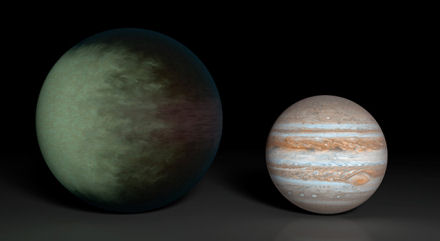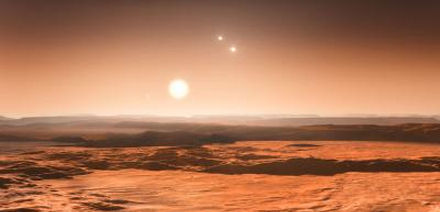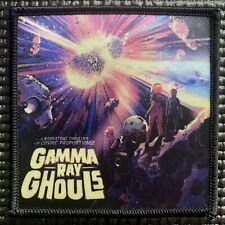
For the first time, astronomers have been able to directly follow the motion of an exoplanet as it moves to the other side of its host star. The star, Beta Pictoris, is only 12 million years old (less than three-thousandths the age of our sun) and is 75 percent more massive than our sun. It is located about 60 light-years away towards the constellation of Pictor and is one of the best-known examples of a star surrounded by a dusty debris disc.
Earlier observations showed a warp of the debris disc, a secondary inclined disc and comets falling onto the star. “Those were indirect, but tell-tale signs that strongly suggested the presence of a massive planet, and our new observations now definitively prove this,” says team leader Anne-Marie Lagrange. “Because the star is so young, our results prove that giant planets can form in discs in time-spans as short as a few million years.”
Recent observations have shown that discs around young stars disperse within a few million years, and that giant planet formation must occur faster than previously thought. Beta Pictoris is now clear proof that this is indeed possible.
The team used the NAOS-CONICA instrument (NACO), mounted on one of the 8.2-metre Unit Telescopes of ESO’s Very Large Telescope (VLT), to study the immediate surroundings of Beta Pictoris in 2003, 2008 and 2009. In 2003 a faint source inside the disc was seen, but it was not possible to exclude the possibility that it was a background star.
In new images taken in 2008 and spring 2009, the source had disappeared. The most recent observations, taken during autumn 2009, revealed the object on the other side of the disc after a period of “hiding” either behind or in front of the star (in the glare of the star). This confirmed that the source was indeed an exoplanet and that it was orbiting its host star. It also provided insights into the size of its orbit around the star.
The planet has a mass of about nine Jupiter masses and the right mass and location to explain the observed warp in the inner parts of the debris disc. Together with the planets found around the young, massive stars Fomalhaut and HR8799, the existence of Beta Pictoris b suggests that super-Jupiters could be frequent byproducts of planet formation around more massive stars.
A few other planetary candidates have been imaged, but they are all located further from their host star than Beta Pictoris b. If located in the Solar System, they all would lie close to or beyond the orbit of the furthest planet, Neptune. The formation processes of these distant planets are likely to be quite different from those in our Solar System and in Beta Pictoris.
“The recent direct images of exoplanets illustrate the diversity of planetary systems,” concludes Lagrange. “Among those, Beta Pictoris b is the most promising case of a planet that could have formed in the same way as the giant planets in our Solar System.”
Related:
Astronomers cop an eyeful of giant planet’s demise
Scientists mull polarized light tell-tales from alien life
Exoplanets galore! Four distant planets imaged
Plenty Of Earth-Like Planets Out There, Say Astronomers


















Comments are closed.